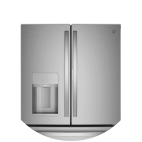Have you ever gone to the grocery store and realized you left your list at home? Suddenly you're walking around aimlessly trying hard to stir up the last image you have of your pantry or recalling what the inside of your fridge even looks like, meanwhile grabbing every food that looks familiar because hey, better safe than two sorry trips to the grocery store! And then of course, a few days later around 5pm you're stuck peering into the freezer wondering if hot dogs and hash browns constitute a meal or whether it's possible to make mashed potatoes without potatoes and honestly, how did you spend so much money yet literally (probably not literally) have no food whatsoever?! We have all been there. Even with the best intentions we end up spending too much money on not enough food and then cooking suddenly becomes a daunting task. If there was a fairy that would come make it all better, her name would be Meal Planning (or something more fairy-like, such as "Nettle Goldfly Meal Planning" or "Moth Meal Planning Quillweb"). Meal planning is simply the process of planning which foods you're going to make every meal over the next week or few weeks. It allows you to be purposeful in grocery shopping, prepared for food prep, and use foods in a timely matter before they go to waste. Without a doubt, planning your meals will save you time and money, as well as, help you eat healthier, relieve stress, and bring delight back to cooking. Do you need anymore reasons than those? Follow our step-by-step list below to get started today! 1. Get Organized The best way to start a meal plan is to have the materials that suit your food lifestyle. Depending on your grocery shopping habits, choose a weekly or monthly calendar to write down your planned meals for each day. This could be in the form of an artsy chalkboard, decorated binder, plain notebook, or cute calendar - whatever you prefer. If planning every meal feels overwhelming, we suggest planning just dinners since breakfast (hello, cereal!) and lunch (mmm, leftovers) are generally easier and may not require planning. You'll also need a grocery list got organize the food you need to prep. One of our favorite templates is this fillable PDF file because you can simply enter (and change!) your plan and grocery list before printing it out. 2. Check Your Inventory Look in your pantry, cupboard, refrigerator, and wherever else you're hoarding food and make a checklist of what you already have. You may be surprised how much food you actually have and the meals it can make. If a physical list takes too long, just make a mental note while moving on to Step 3. 3. Plan With Resources To utilize your pantry to its full potential, start by planning meals based off foods you already have (or if you garden, include the foods you anticipate to have). Websites like AllRecipes.com and Supercook.com allow you to search recipes by ingredients and then add the ingredients you don't have to a grocery list. 4. Be Smart Planning is all about preparing so consider events happening throughout the week. If Junior's soccer practice is Thursday at 6pm, make that a simple meal or "leftovers" night. And since you can save money by buying in bulk, plan your meals based on similar ingredients. That 5 lbs. of ground beef can be tacos Tuesday night and spaghetti Wednesday night. 5. Grocery Shop and Go! Once you've planned out your meals, it's time to grocery shop with confidence (as long as you don't forget your list). If you've planned well, you will have everything you need and nothing that you don't, which should also translate to a smaller grocery bill. And that's all you need to get started! What are your favorite meal planning tips?
We have all been there. Even with the best intentions we end up spending too much money on not enough food and then cooking suddenly becomes a daunting task. If there was a fairy that would come make it all better, her name would be Meal Planning (or something more fairy-like, such as "Nettle Goldfly Meal Planning" or "Moth Meal Planning Quillweb"). Meal planning is simply the process of planning which foods you're going to make every meal over the next week or few weeks. It allows you to be purposeful in grocery shopping, prepared for food prep, and use foods in a timely matter before they go to waste. Without a doubt, planning your meals will save you time and money, as well as, help you eat healthier, relieve stress, and bring delight back to cooking. Do you need anymore reasons than those? Follow our step-by-step list below to get started today! 1. Get Organized The best way to start a meal plan is to have the materials that suit your food lifestyle. Depending on your grocery shopping habits, choose a weekly or monthly calendar to write down your planned meals for each day. This could be in the form of an artsy chalkboard, decorated binder, plain notebook, or cute calendar - whatever you prefer. If planning every meal feels overwhelming, we suggest planning just dinners since breakfast (hello, cereal!) and lunch (mmm, leftovers) are generally easier and may not require planning. You'll also need a grocery list got organize the food you need to prep. One of our favorite templates is this fillable PDF file because you can simply enter (and change!) your plan and grocery list before printing it out. 2. Check Your Inventory Look in your pantry, cupboard, refrigerator, and wherever else you're hoarding food and make a checklist of what you already have. You may be surprised how much food you actually have and the meals it can make. If a physical list takes too long, just make a mental note while moving on to Step 3. 3. Plan With Resources To utilize your pantry to its full potential, start by planning meals based off foods you already have (or if you garden, include the foods you anticipate to have). Websites like AllRecipes.com and Supercook.com allow you to search recipes by ingredients and then add the ingredients you don't have to a grocery list. 4. Be Smart Planning is all about preparing so consider events happening throughout the week. If Junior's soccer practice is Thursday at 6pm, make that a simple meal or "leftovers" night. And since you can save money by buying in bulk, plan your meals based on similar ingredients. That 5 lbs. of ground beef can be tacos Tuesday night and spaghetti Wednesday night. 5. Grocery Shop and Go! Once you've planned out your meals, it's time to grocery shop with confidence (as long as you don't forget your list). If you've planned well, you will have everything you need and nothing that you don't, which should also translate to a smaller grocery bill. And that's all you need to get started! What are your favorite meal planning tips?
 We have all been there. Even with the best intentions we end up spending too much money on not enough food and then cooking suddenly becomes a daunting task. If there was a fairy that would come make it all better, her name would be Meal Planning (or something more fairy-like, such as "Nettle Goldfly Meal Planning" or "Moth Meal Planning Quillweb"). Meal planning is simply the process of planning which foods you're going to make every meal over the next week or few weeks. It allows you to be purposeful in grocery shopping, prepared for food prep, and use foods in a timely matter before they go to waste. Without a doubt, planning your meals will save you time and money, as well as, help you eat healthier, relieve stress, and bring delight back to cooking. Do you need anymore reasons than those? Follow our step-by-step list below to get started today! 1. Get Organized The best way to start a meal plan is to have the materials that suit your food lifestyle. Depending on your grocery shopping habits, choose a weekly or monthly calendar to write down your planned meals for each day. This could be in the form of an artsy chalkboard, decorated binder, plain notebook, or cute calendar - whatever you prefer. If planning every meal feels overwhelming, we suggest planning just dinners since breakfast (hello, cereal!) and lunch (mmm, leftovers) are generally easier and may not require planning. You'll also need a grocery list got organize the food you need to prep. One of our favorite templates is this fillable PDF file because you can simply enter (and change!) your plan and grocery list before printing it out. 2. Check Your Inventory Look in your pantry, cupboard, refrigerator, and wherever else you're hoarding food and make a checklist of what you already have. You may be surprised how much food you actually have and the meals it can make. If a physical list takes too long, just make a mental note while moving on to Step 3. 3. Plan With Resources To utilize your pantry to its full potential, start by planning meals based off foods you already have (or if you garden, include the foods you anticipate to have). Websites like AllRecipes.com and Supercook.com allow you to search recipes by ingredients and then add the ingredients you don't have to a grocery list. 4. Be Smart Planning is all about preparing so consider events happening throughout the week. If Junior's soccer practice is Thursday at 6pm, make that a simple meal or "leftovers" night. And since you can save money by buying in bulk, plan your meals based on similar ingredients. That 5 lbs. of ground beef can be tacos Tuesday night and spaghetti Wednesday night. 5. Grocery Shop and Go! Once you've planned out your meals, it's time to grocery shop with confidence (as long as you don't forget your list). If you've planned well, you will have everything you need and nothing that you don't, which should also translate to a smaller grocery bill. And that's all you need to get started! What are your favorite meal planning tips?
We have all been there. Even with the best intentions we end up spending too much money on not enough food and then cooking suddenly becomes a daunting task. If there was a fairy that would come make it all better, her name would be Meal Planning (or something more fairy-like, such as "Nettle Goldfly Meal Planning" or "Moth Meal Planning Quillweb"). Meal planning is simply the process of planning which foods you're going to make every meal over the next week or few weeks. It allows you to be purposeful in grocery shopping, prepared for food prep, and use foods in a timely matter before they go to waste. Without a doubt, planning your meals will save you time and money, as well as, help you eat healthier, relieve stress, and bring delight back to cooking. Do you need anymore reasons than those? Follow our step-by-step list below to get started today! 1. Get Organized The best way to start a meal plan is to have the materials that suit your food lifestyle. Depending on your grocery shopping habits, choose a weekly or monthly calendar to write down your planned meals for each day. This could be in the form of an artsy chalkboard, decorated binder, plain notebook, or cute calendar - whatever you prefer. If planning every meal feels overwhelming, we suggest planning just dinners since breakfast (hello, cereal!) and lunch (mmm, leftovers) are generally easier and may not require planning. You'll also need a grocery list got organize the food you need to prep. One of our favorite templates is this fillable PDF file because you can simply enter (and change!) your plan and grocery list before printing it out. 2. Check Your Inventory Look in your pantry, cupboard, refrigerator, and wherever else you're hoarding food and make a checklist of what you already have. You may be surprised how much food you actually have and the meals it can make. If a physical list takes too long, just make a mental note while moving on to Step 3. 3. Plan With Resources To utilize your pantry to its full potential, start by planning meals based off foods you already have (or if you garden, include the foods you anticipate to have). Websites like AllRecipes.com and Supercook.com allow you to search recipes by ingredients and then add the ingredients you don't have to a grocery list. 4. Be Smart Planning is all about preparing so consider events happening throughout the week. If Junior's soccer practice is Thursday at 6pm, make that a simple meal or "leftovers" night. And since you can save money by buying in bulk, plan your meals based on similar ingredients. That 5 lbs. of ground beef can be tacos Tuesday night and spaghetti Wednesday night. 5. Grocery Shop and Go! Once you've planned out your meals, it's time to grocery shop with confidence (as long as you don't forget your list). If you've planned well, you will have everything you need and nothing that you don't, which should also translate to a smaller grocery bill. And that's all you need to get started! What are your favorite meal planning tips?









